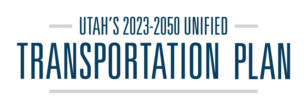Fast, Frequent and No-Fare Transit
No-fare transit means that the cost of transit is paid through revenue sources other than direct fares paid upon boarding the transit vehicle.
The air quality along the Wasatch Front and in other parts of the state has become a topic that can no longer be ignored. The frequency and intensity of bad air days are of great concern from a public health, economic development and environmental perspective. If quality of life is to be maintained as Utah continues its impressive population expansion, addressing the issue of air quality is not a question of if or when, but how.

Currently, emissions from vehicles account for 57% of criteria pollutants (PM10, NOx, CO, HC, what we commonly think of as “smog”, these are those pollutants that directly affect public health), along the Wasatch Front. This puts public transit agencies in a unique position to be key partners in addressing air quality issues. Through a series of pilot “Free Fare Days,” UTA, in partnership with the Utah Division of Air Quality, has demonstrated that increasing ridership on transit has an impact in reducing criteria air pollutants. The next question that the state must address is how much of an increase in ridership is a result of no fare days, and what is the potential impact of that increase on reducing criteria air pollutants.
In addition to environmental impacts, no-fare transit expands access for many with limited income to new jobs, education, healthcare and daily errands. In Park City and Cache Valley, no-fare transit is a key component of supporting the tourism and the local economy. Furthermore, subsidized transit and increased service levels on the UVX line in Utah County has resulted in an increase from 1,800 boardings per day to over 14,000 boardings per day. Beyond air quality, some congestion relief has been shown to occur with no-fare transit.
